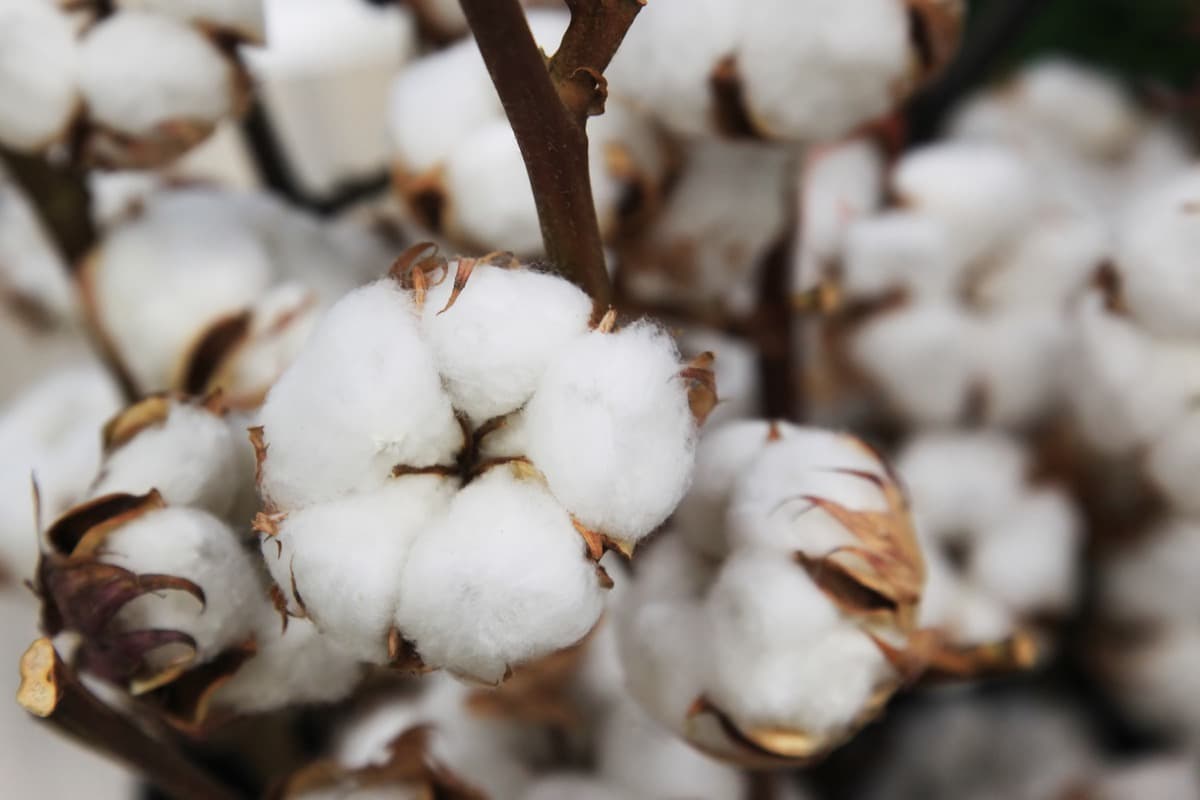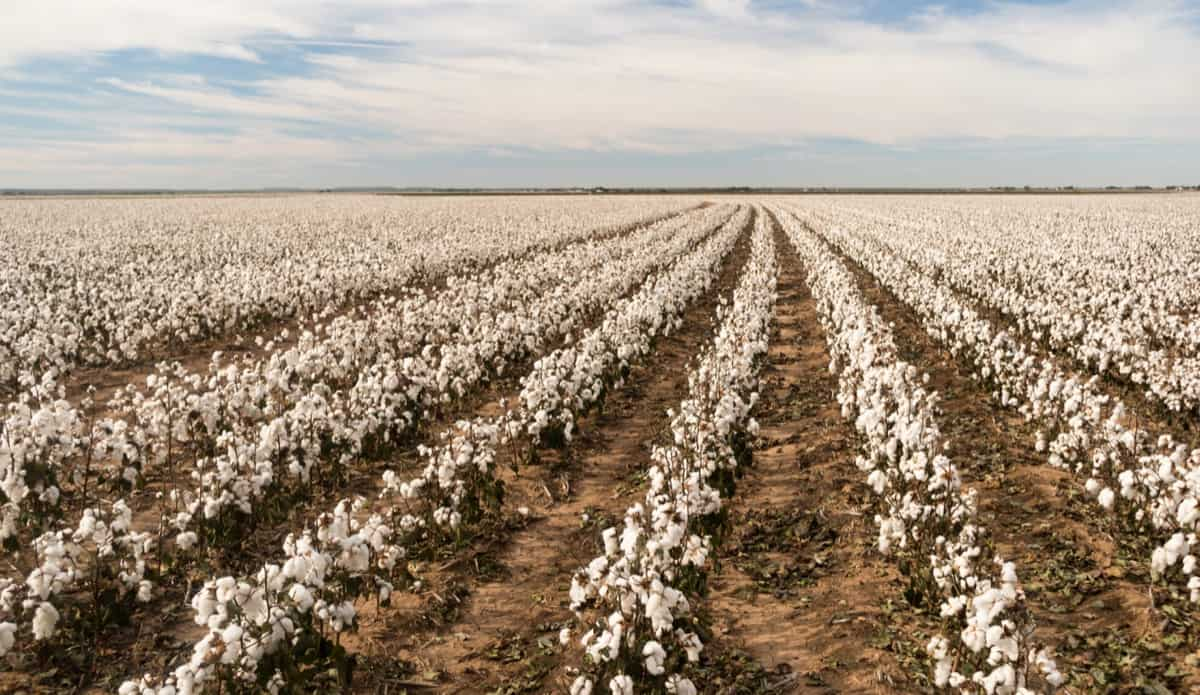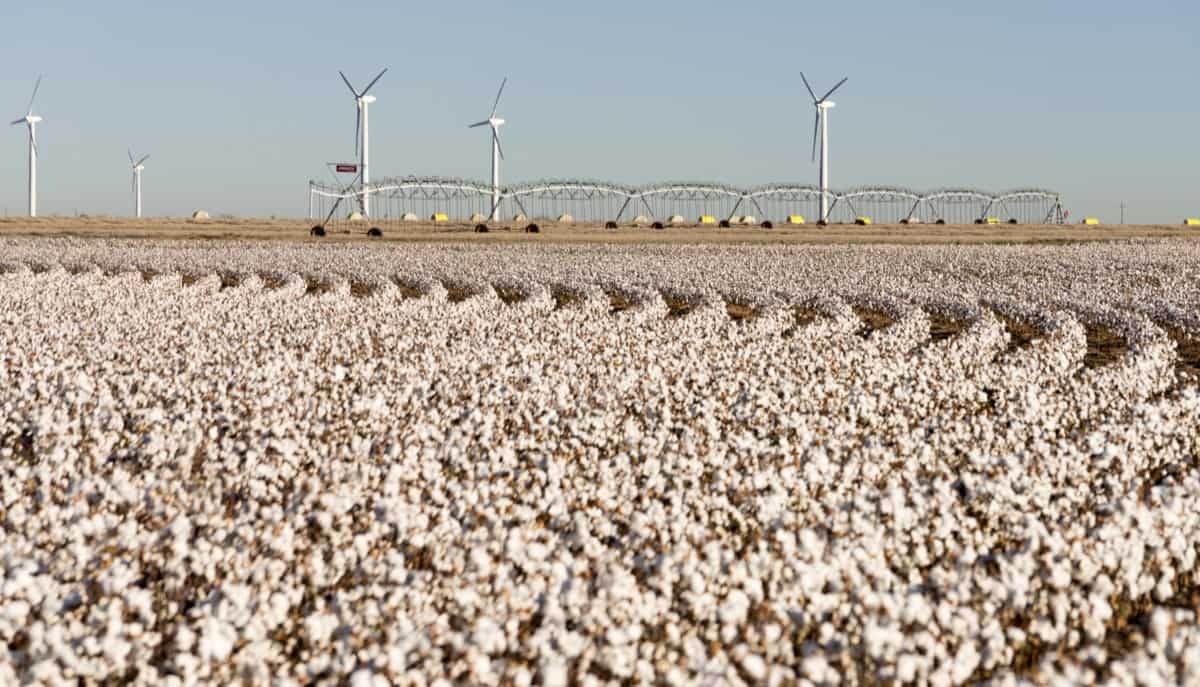Cotton is a crop that is extremely adaptable and widely used all over the world, but growing it efficiently requires close attention to cultivation techniques. We’ll bring you through every step of cotton production in this comprehensive guide, from choosing the best variety to preparing the soil to plant, fertilizing, watering, managing pests and diseases, and harvesting.

We’ll offer helpful advice and methods to help you increase yield and quality while lowering labor expenses and environmental impact. Whether you’re a farmer or a learner, this manual will provide the skills and assurance you need to produce cotton profitably.
Cotton Production Guide: Best Package and Practices of Cotton High Production
Cotton farmers can achieve high yields and profits by following the best package and practices. This includes selecting suitable varieties, planting in well-drained soil, proper irrigation and fertilization, weed control, disease, and pest management, and timely harvesting. Using biocontrol agents and intercropping with legumes can enhance soil fertility and reduce dependence on chemical pesticides. By adopting these practices, cotton farmers can ensure long-term viability and increase the productivity of their crops.
Field/Land Preparation for Crop
Both light and heavy soils are suitable for growing cotton, but moisture in the soil at boll bursting is essential. The land should be well-drained, fertile, and free from weeds and debris. The field should be ploughed and levelled. The field should be irrigated before planting
Types and Cultivated Species
Gossypium arboreum, G.herbaceum, G.hirsutum, and G.barbadense are the four cultivated species of India on a commercial scale.
Cotton Hybrid Varieties
- Suvin
- Jayalakshmi
- TCHB 213
- Savitha
- HB 224
Temperature, Climatic, and Rainfall Requirements
Cotton requires a warm and humid climate with an annual temperature range of 20°C to 28°C, along with equitable temperature distribution and bright sunshine.
- Optimum temperature: 21-30°C.
- Humidity: 60-80%.
- Annual rainfall: 50-100 cm. In terms of rainfall, an ideal range for cotton cultivation is 55-100 cm per year, but rainfall during harvesting can be harmful.
Propagation of Crop
Propagation is done through seeds.
Seed Rate and Sowing Method
- Seed rate: 10-15 kg per acre. Recommended seed rate for cotton is 8-10 kg per hectare.
- Sowing method: Line sowing, Broadcasting.
Early sowing is conducive to getting a good yield. Complete sowing latest by the end of June and, if necessary, resort to dry sowing. Use a seed rate of 3.75 kg/ha for improved varieties and 2.0 kg/ha for hybrids. Sowing methods for cotton, including broadcasting, line sowing, and dribbling.
In case you missed it: How to Start a Fish Hatchery Business: A Profital Fish Breeding Idea for Aqua Farmers

However, the recommended method is line sowing, which involves sowing seeds in furrows made at a distance of 45-60 cm from each other. The most adopted seed rate is 15-25 kg/ha and 75-90 cm spacing between the rows for irrigated conditions. However, the seed rate of 12-16 kg/ha for the rainfed crop and spacing of g 45-60 cm between rows is followed.
Seed Treatment
Seeds should be treated with Thiram or Carbendazim. Acid delinting is a seed treatment process for cotton cultivation that involves using concentrated sulfuric acid to remove fuzz from the seeds. The acid is washed off, and healthy, well-filled seeds are collected. This process eliminates seed-borne diseases, destroys pests, and improves germination. After acid delinting, seeds are treated with bavistin, thiram, or captan before sowing.
Plant Population
Sow the crop in lines. Recommended spacing is 90 cm x 60 cm and 90 cm x 90 cm. Thinning should be done 10-12 days after germination. Second and third hoeing, weeding, and earthing should be done at 3 and 6 weeks stages.
The Topping
The topping should be done when the plant reaches a height of 1m to induce the formation of more reproductive branches.
Manure and Fertilizer Applications and Scheduling
- Organic manure: 25-30 tonnes per acre.
- NPK fertilizer: 100:50:50 kg per acre.
- Schedule: 1/3 N and full P and K at sowing, 1/3 N at 30 days after sowing. 1/3 N at 60 days after sowing.
- Fertilizer application should be based on soil test recommendations, or a rate of 80, 40, and 40 kg of N, P2O5, and K2O/ha for varieties and 120-60-60 kg N-P2O5-K2O/ha for hybrids with 5 t FYM/ha can be applied.
- Spreading 12.5 t of FYM or compost or 2.5 t of vermicompost per ha as a basal dose at the time of the f last ploughing.
- Application of N at 60-80 kgs, P at 30-40 kgs Basal application of 12.5 t/ha of FYM or 2.5 t/ha of vermicompost, application of N at 60-80 kg/ha, P at 30-40 kg/ha, and K at 30-40 kg/ha, and foliar application of 2% DAP and 1% KCl.
Weed Control/Methods
- Pre-emergence application of Pendimethalin or Fluchloralin.
- Hand weeding.
- Interculture.
Different Cropping Systems and Intercropping
- Cotton can be grown in cropping systems such as sole crop, relay cropping, and intercropping.
- Intercropping with legumes, cereals, and oilseeds provides additional income and increases soil fertility.
- Relay cropping of cotton with wheat, chickpea, and mustard is beneficial as it improves water use efficiency, controls weeds, and increases yield. Cotton + Groundnut, Cotton + Castor, and Cotton + Soybean.
Thinning
Thinning cotton field at 10-12 days after germination. Gap filling is done with h planting of seedlings raised in n leaf bag. The first hoeing and thinning can also be done at this stage. Second and third hoeing, weeding, and earthing should be done at 3 and 6 weeks stages, respectively. Natural control by hand hoeing and chemical control by pre-plant incorporation of Fluchloralin or pendimethalin with one-hand weeding
Irrigation methods and Irrigation Scheduling
- Irrigation Methods: Flood irrigation, Drip irrigation. Sprinkler irrigation.
- Irrigation Scheduling: First irrigation at 5-7 days after sowing, Subsequent irrigation at an interval of 10-15 days.
Cotton needs 700-1,200 of m water, flood irrigation or furrow/alternate furrow method is recommended. The critical stages of irrigation in cotton are germination and seedling establishment, vegetative growth, squaring, flowering and boll development, and boll maturation. Adequate moisture at these stages is necessary for optimal yield and quality of cotton fibre.
List of Major Diseases and Control Methods
Major cotton diseases are Alternaria leaf spot, Anthracnose, Bacterial blight, Verticillium wilt, Fusarium wilt, Root-knot nematode, Cotton leaf curl virus, Black arm, Boll rot, and Grey mildew.
- Cotton wilt: Application of Bavistin or Ridomil.
- Anthracnose: Application of Copper oxychloride or Mancozeb.
- Alternaria leaf spot: Application of Carbendazim or Mancozeb.
In case you missed it: How to Grow Snake Gourd from Seeds in Pots: A Step-By-Step Home Garden Guide for Beginners

List of Major Pest and Control Methods
Major cotton pests are Bollworms, Aphids, Jassids, Thrips, Whiteflies, Mealybugs, Red spider mites, Cotton stainers, Armyworms, and Cutworms.
- Pink bollworm: Application of Endosulfan or Phosphamidon.
- Spotted bollworm: Application of Bacillus thuringiensis or Carbaryl.
- Bollworm complex: Application of Neem oil or Cypermethrin.
Use of light traps for leafhoppers and spraying Monocrotophos36SL @ 1000 ml/ha for severe infestation of leafhoppers, aphids, and spotted or spiny bollworms.
Harvesting and Threshing
Harvesting is done when bolls start to crack open. Threshing is done using machines or by beating with sticks. Picking when bolls are fully mature, and fibers have turned brownish-yellow. The separation of lint from seed in the ginning mill is ginning of cotton.
Yield Per Acre
On average, we can harvest from 2 to 4 tons (4400 to 8800 lbs.) of cotton per hectare, or 0,8 to 1, 6 tons (1760 to 3527 lbs.) per acre.
Conclusion
Cotton Production Guide provides a comprehensive and step-by-step approach to cotton cultivation, covering all aspects from land preparation to harvesting. By following these practices, farmers can improve their yield and profitability.
- Feed Your Flock for Less: Top 10 Tips to Save on Chicken Feed
- Ultimate Guide to Ossabaw Island Hog: Breeding, Raising, Diet, and Care
- Hatching Answers: The Top 10 Reasons Your Chickens Aren’t Laying Eggs
- Eggs and Economics: Breaking Down the Cost of Raising Backyard Chickens
- Defend Your Greens: Proven Methods to Keep Iguanas Out of Your Garden
- Ultimate Guide to Cinnamon Queen Chicken: A Comprehensive Guide for Beginners
- Ultimate Guide to California Tan Chicken: Breeding, Raising, Diet, Egg-Production and Care
- Ultimate Guide to Marsh Daisy Chicken: Breeding, Raising, Diet, and Care
- 10 Types of Chicken Farming Businesses You Can Start for Profits